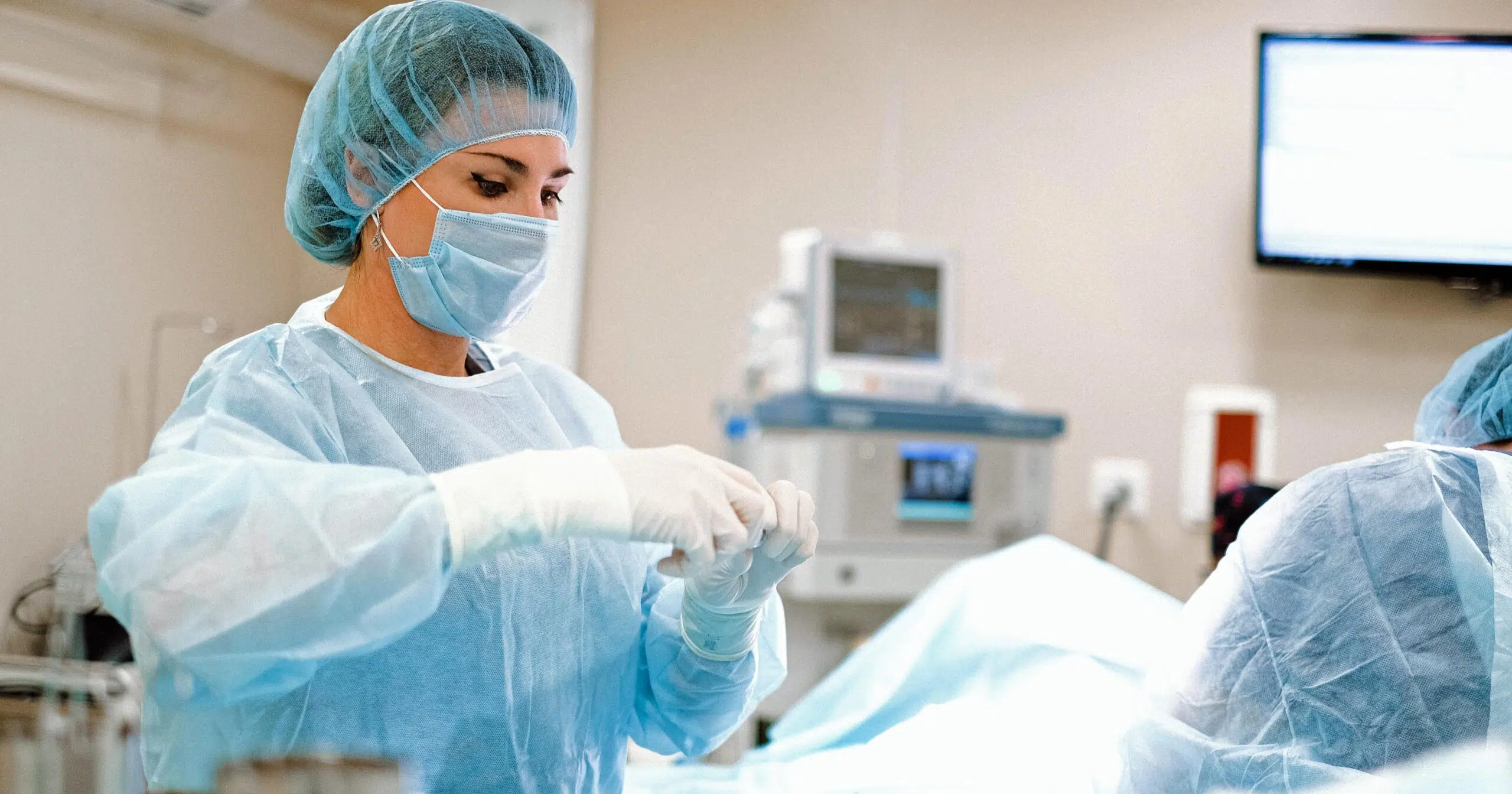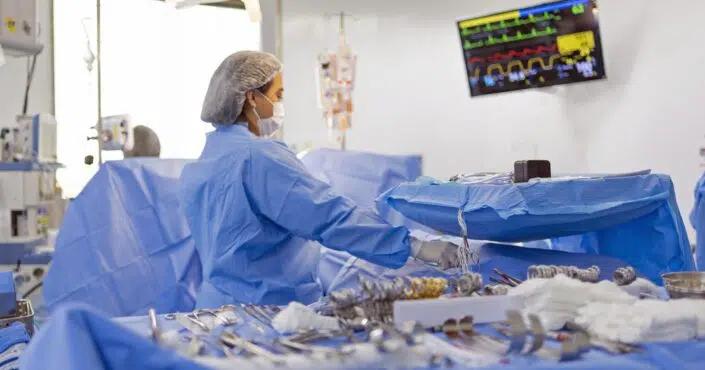The healthcare and surgical industry is rapidly expanding, increasing job opportunities for surgical technologists. If you’ve ever wondered how long it takes to become a certified surgical technologist (CST) and want to know the necessary steps, this guide is for you. You might be surprised how little time it might take. If you’re eager to play a pivotal role in the operating room (OR), we’ve got your roadmap to success, including details on CST program pathways, valuable study tips to help ace your surgical tech certification exam and a career timeline to help you plan your future.
What Is the Role of a Certified Surgical Technologist?
Certified surgical technologists deliver quality patient care and ensure the utmost safety practices in ORs throughout the nation. CSTs safeguard surgical equipment and sterile procedure guidelines, working diligently to make a difference in their patients’ lives. Before discussing how to become a certified surgical technologist, reviewing the CST role and responsibilities helps you determine whether this career path appeals to you.
Certified Surgical Technologists assist surgeons, nurses and anesthesia providers in different surgical environments, such as hospitals, outpatient or ambulatory surgical centers, and physician offices that offer sterile procedures. They may work in different specialties within the OR, such as orthopedics, neurosurgery, cardiology and organ transplant.
No matter the specialty, certified surgical technologists’ responsibilities vary based on the three phases of surgery, with primary duties including:
- Preoperative: Duties before surgeries include sterilizing and counting surgical equipment, preparing the operating room and prepping the patient by applying drapes, disinfecting incision sites and positioning the patient. CSTs may also assist surgical team members with applying sterile gowns and gloves.
- Intraoperative: Responsibilities while patients undergo surgeries include maintaining a sterile operating field and equipment, passing tools to the surgeon, assisting with retracting tissue and specimens and helping the circulating or operating room registered nurse (RN). CSTs are “scrubbed in” during surgery, meaning they decontaminate their hands and forearms before the procedure and don surgical attire to ensure an aseptic environment.
- Postoperative: Tasks performed after surgeries include applying wound dressings, disposing of used equipment properly and overseeing terminal room sterilization. Another crucial responsibility is counting surgical equipment, ensuring the number matches the starting amount, and documenting accordingly.
Steps and Timeline to Becoming a Certified Surgical Technologist

Educational Pathways
Certified surgical technologist programs prepare students with the knowledge and skills to become surgical technologists. Students may receive surgical technology training through community colleges, vocational schools or universities. Some CSTs receive training through hospital or military surgical technology programs, though these are less common.
You can earn a certificate, diploma or associate degree depending on your chosen school and educational pathway. Certificate and diploma programs may take as little as 12 months to graduate while completing associate degree programs take two years. All these educational surgical technology program pathways include didactic classroom learning and a required number of clinical hours by precepting with a CST to graduate.
The time necessary to complete a program also depends on whether you’re enrolled full-time or part-time and where learning occurs. Many surgical technology institutions offer in-person, online or hybrid program options.
Online programs often let you work at your pace, allowing you to finish sooner than in-person programs. However, these programs let students complete didactic education online, but they must still attend in-person clinical rotations to practice hands-on sterilization and surgical standards of care.
Admission requirements and course prerequisites vary by institution and program type. Those applying to a surgical tech certificate program must possess a high school diploma or general education development (GED) certification and submit a physical exam and immunization records.
Individuals applying to diploma and associate degree programs typically must complete additional admission requirements, including:
- Taking the Test of Essential Academic Skills (TEAS)
- Completing prerequisite coursework in anatomy, biology, medical terminology and microbiology
- Obtaining Basic Life Support certification
Each prerequisite increases the time it takes to become a certified surgical technologist. All educational programs must have accreditation from either the Commission on Accreditation of Allied Health Education Programs (CAAHEP) or the Accrediting Bureau of Health Education Schools (ABHES).
To increase your chances of acceptance into a surgical technology program, you might consider volunteering at a hospital or healthcare organization to show your interest in healthcare. Additionally, try to maintain an overall grade point average of a “B” or higher and an “A” in prerequisite courses, as this increases your chances of acceptance.
Certification and State Registration Process
Upon graduation from an accredited surgical technology program, students become eligible to take the certified surgical technologist certification exam. Eligibility criteria depend on whether you completed training through an institution or the military and include the following:
- Graduation from an approved program accredited by either CAAHEP or ABHES
- Certificate of graduation or official transcripts
- Notarized letter from the Program Director or DD214 military form
During this time, you can also begin applying for your state registration, which grants you the authority to practice as a surgical technologist within a specific state. However, some states don’t require certification or registration to practice as a surgical technologist.
As of January 2024, only 13 states have laws regarding surgical technologist certification and registration requirements, according to the Association of Surgical Technologists (AST). These states are:
- Connecticut
- Idaho
- Indiana
- Massachusetts
- Nevada
- New Jersey
- New York
- Oregon
- Pennsylvania
- South Carolina
- Tennessee
- Texas
- Virginia
Additionally, five states only have laws surrounding registration, not certification:
- Arkansas
- Colorado
- Illinois
- North Dakota
- Washington
Although many states don’t require certification, obtaining your CST credential demonstrates your expertise as a surgical technologist and improves your chances of being hired. Many hospitals require certification regardless of state requirements to ensure rigorous safety standards of surgical care.
What to Expect on the Certified Surgical Technologist Exam

The National Board of Surgical Technology and Surgical Assisting (NBSTSA) designs and administers the CST exam. The NBSTSA’s goal is to ensure those who pass and become certified have the knowledge and skills necessary to work as an entry-level surgical technologist.
The CST exam consists of three sections, covering preoperative care, ancillary duties and basic science. The test includes 175 multiple-choice questions, with 150 scored and the remaining 25 are unscored and used as research for future test questions. You must score at least 102 out of 150 questions to pass the exam. You have 4 hours to complete the exam, although most testers complete the exam in less time.
You can take the CST exam anytime after the NBSTSA approves you to sit for it. Most students choose to sit for their CST exam several weeks after graduation, giving them ample time to study. Studying is vital to passing the exam.
5 CST Exam Study Tips
- Review the candidate handbook: The handbook reviews the exam outline, reference textbooks and key knowledge areas to guide your studying.
- Make a study plan: After reviewing the candidate handbook and registering for your exam, make a study plan. Create a detailed list of which areas you’re studying and for how long each day or week. Allot for breaks, personal time, obligations and practice exams.
- Take practice examinations: One of the best ways to test your knowledge is to take practice exams. You can find many free online CST practice exams and smartphone apps. Many of these practice tests offer a breakdown of the areas and questions you missed, guiding you to where to focus your studying.
- Join a study group: Joining a study group, either in-person or online, can help keep you on track with your studying timeline. Other members can also offer valuable insight into areas where you may struggle and tricks to help you remember information, like acronyms or phrases.
- Practice time management: Procrastination won’t help you when studying for your exam, as there’s a lot of information to remember. Instead, practice time management skills, like scheduling study, work and personal time. Ensure you allocate time for self-care activities, as this can decrease your stress levels.
Other Factors Affecting the CST Timeline
Many new graduates choose to enter hospital surgical technology residency programs, where they complete additional educational coursework and precept with an experienced surgical technologist. Program participants gain invaluable experience and have the opportunity to rotate through surgical specialty areas, like pediatrics and plastic surgery, to find what suits their interests.
Residency programs vary in length, ranging from three months to one year. In addition, many healthcare systems require surgical technologists to have their certification before starting and offer CST exam fee reimbursement.
Many join professional organizations and committees, like the AST or the Foundation for Surgical Technology, to broaden their professional network and uphold clinical standards.
With the new technological advances in surgery and the OR field, CSTs must keep pace with new evidence-based practices and guidelines. Thus, certified surgical technologists must understand the importance of continuing education and renewing their CST certification every two years.
Salary Considerations
Most CSTs earn a decent salary, averaging $37.21 hourly for staff roles on February 8, 2024, per Vivian Health’s salary information. Although many CSTs enjoy their OR careers, they may decide to further their education by becoming operating room, circulating or scrub RNs. These roles allow you to advance your career while also increasing your earning potential and available job opportunities. During the same period, staff nurses earned an average of $49.03 per hour, circulating RNs averaged $54.19, and scrub RNs made an average of $63.30 per hour.
Kickstart your surgical technology career by exploring Vivian’s numerous CST job opportunities and multiple career resources.










Question about the salary
Hello Keairra and thanks for reaching out. CSTs averaged $37.21 hourly for staff jobs on February 8, 2024, based on Vivian Health’s salary information. However, this is an average of all active staff CST jobs posted on the site over the last 7 days and can fluctuate daily based on the most recent salary information.